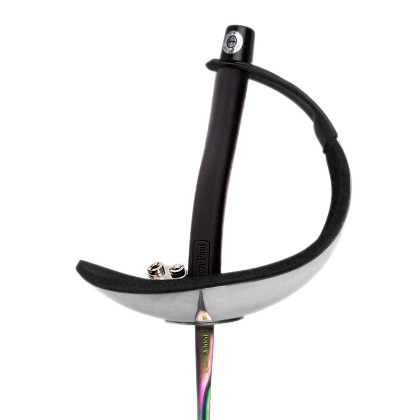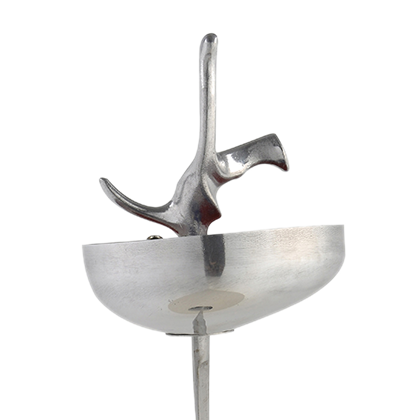Our Beginner’s Courses
Truro Fencing Club runs beginner courses for both children and adults (separately) throughout the academic year.
This page takes you through the many benefits of fencing, the three weapons and includes details of our current courses for you to join. Please feel free to explore the website and if you have any further questions, queries or concerns at all, please don’t hesitate to get in touch with us directly.
Truro Fencing Club’s 7-session Beginners’ Courses run on Wednesday evenings for children, and Thursday evenings for adults. All courses take place at the Cornwall Fencing Centre. The 7-session course costs £49. On completion of the course you will be entitled to the 3-month Beginner membership at £20 / month. This begins in the first full month following completion of the course.
NB: no sessions during half term or on bank holidays.
ADULT & CHILDRENS BEGINNER COURSES
- CHILDREN’S COURSES are for ages 8+ (fencers must be 8 years of age or over, on January 1st 2024 to join the next CHILDREN’S beginner course)
- ADULT COURSES are for ages 15+ (fencers must be 15 years of age or over, on January 1st 2024 to join the next ADULT beginner course)
There will be no more than 12 fencers on each course of mixed gender groups. All equipment is provided and included in the course fee. Places are allocated on a first come first served basis and fencers may pay in advance, to secure their place with a completed enrolment form.
- CHILDREN’S COURSES are held on Wednesdays, 18:30-19:30, with Monday & Wednesday sessions in the final week
- ADULT COURSES are held on Thursdays, 19:30-20:30.
2024 children’s BEGINNER’S COURSE DATES
CBC324 – CHILDREN’S Beginner Course
(18:30-19:30, 7 sessions, Course fee £49, payment ref: CBC324 enrolment form & bank details below)
- WED 17TH APRIL
- WED 24TH APRIL
- WED 1ST MAY
- WED 8TH MAY
- WED 15TH MAY
- MON 20TH MAY
- WED 22ND MAY
NEXT STEPS:
JOIN: Truro Fencing Club FB Group, for updates and announcements as they are released.
COMPLETE: an enrolment form at the bottom of this page for you or your fencer to be added to the WAITLIST for the next course and receive a priority notice – you will be contacted first to pay in advance to secure the place on the course.
ADULT’S FENCING COURSES, CORNWALL FENCING CENTRE
Adult fencers (15+) may also consider the 1-2-1 courses below, specifically designed for fencers who have some previous experience.
Please email TFC Coach Balazs Kurucz admin@trurofencing.com is you would like to book any of the 1-2-1 courses.
- Start Fencing’ 1 x 1-2-1 introduction, £32.50 (1 x 50 mins) (introduction to fencing for the complete beginner)
- Fencing Refresher’ 3 x 1-2-1 coaching, £55 (3 x 30 mins) (for anyone getting back into fencing after a break)
- Fast-track your Fencing’ 4 x 1-2-1 lessons, £72 (4 x 30 mins) (for novices looking to improve quickly)
- Bespoke stunt training 4 x 1-2-1 lessons £120 (4 x 50 mins)
2024 ADULT’S BEGINNER COURSE DATES
ABC324 – ADULT’S Beginner Course
(19:30-20:30, 7 sessions, Course fee £49, payment ref: ABC324 enrolment form & bank details below)
- THUR 11TH APRIL
- THUR 18TH APRIL
- THUR 25TH APRIL
- THUR 2ND MAY
- THUR 9TH MAY
- THUR 16TH MAY
- THUR 23RD MAY
NEXT STEPS: JOIN: Truro Fencing Club FB Group, for updates and announcements as they are released.
COMPLETE: an enrolment form at the bottom of this page for you or your fencer to be added to the WAITLIST for the next course and receive a priority notice – you will be contacted first to pay in advance to secure the place on the course.
Enrolment
To secure yours or your fencer’s place:
Please complete the online enrolment form (below) and process the course fee of £49 using the payment reference relevant to your chosen course. TFC bank details are:
TFC Bank, HSBC
Sort code: 40-44-34
Account: 41728296
Course fee: £49
Payment Reference: course code + fencers surname
IBAN: GB35HBUK40443441728296
BIC/SWIFT: HBUKGB4160H
Please email us directly admin@trurofencing.com with any questions, queries or concerns you may have.
Beginner's Course Enrolment Form 2024
Why Start Fencing?
The Olympic sport of fencing provides a well-rounded form of mental and physical exercise essential for total health and wellness.
When practiced by children during their developing years, martial arts such as fencing have been shown to increase executive function including focus, suppression of impulsive reactions, and mental manipulation of ideas.

It is a fast-paced sport and a great way to burn calories and stay in shape generally; for example, fencers have been shown to have significantly increased bone and muscle mass compared with controls, which help prevent injury and osteoporosis.
Fencing – despite appearances – is also an exceptionally safe sport, with fencers suffering fewer injuries than athletes in most other Olympic Sports including swimming, table tennis, and curling.
Being a member of Truro Fencing Club offers you the opportunity to experience what can be a lifetime sport.
School-age children, teenagers and college students fence at local clubs and at their schools and universities, while adults from their twenties into their seventies can be found on fencing pistes around the country, exercising their minds and bodies – and winning medals for the club!
FENCING PROGRESSION FOR BEGINNERS, CORNWALL FENCING CENTRE
| DESCRIPTION | DURATION | PAYMENT REF | FEE | |
| BEGINNER COURSES (CHILDREN/ADULT) | Learn the fundamental skills of the Olympic sport of sabre fencing with our top-class coaching team. Footwork, technical and tactical skills, and the basic rules of the game will be covered. All kit will be provided, and by the end of the course you will have learnt enough to join the intermediate course and develop your skills to the next level. Truro Fencing Club’s (TFC) 6-week Beginners’ Courses run on Wednesday evenings at the Cornwall Fencing Centre. The 7-session course (2 sessions held in the final week, Monday and Wednesday) costs £49. On completion of this course, you will be eligible to join the Children’s Intermediate Course. | 7 sessions | THE COURSE CODE | £49 |
| TFC BEGINNER MEMBER | Unlimited access to TFC training sessions in your fencing category. Special TFC Member rates for additional 1-2-1 lessons of 30 mins for £22 (email TFC Head Coach Balazs Kurucz admin@trurofencing.com to book) | 3 MONTHS | BEG | £20 |
| TFC MEMBER (YOUTH/SENIOR) | Unlimited access to Truro Fencing Club training sessions in your fencing category. Special TFC Membership rates and priority places for additional 1-2-1 lessons, training camps & TFC managed events, including domestic and international competitions. For TFC Member rates for additional 1-2-1 lessons of 30 mins for £22 please email TFC HEAD Coach Balazs Kurucz, admin@trurofencing.com to book. | ONGOING | YOUTH | £40 pcm |

Foil
The foil fencer’s uniform includes a metallic vest (called a lamé) which covers the valid target area, so that a valid touch will register on the scoring machine. A small, spring-loaded tip is attached to the point of the foil and is connected to a wire inside the blade. The fencer wears a body cord inside his uniform which connects the foil to a reel wire, connected to the scoring machine.
There are two scoring lights on the machine. One shows a green light when a fencer is hit, and one shows a red light when her opponent is hit. A touch landing outside the valid target area (that which is not covered by the lamé) is indicated by a white light. These “off target” hits do not count in the scoring, but they do stop the fencing action temporarily.

Sabre
The sabre fencer’s uniform includes a metallic jacket (lamé), which covers the target area to register a valid touch on the scoring machine. The mask is different from foil and épée, with a metallic covering since the head is valid target area.
Just as in foil, there are two scoring lights on the machine. One shows a green light when a fencer is hit, and one shows a red light when the opponent his hit. Off-target hits do not register on the machine. A sabre fencers is known as a ‘sabreur’.

Epée
The blade is wired with a spring-loaded tip at the end that completes an electrical circuit when it is depressed beyond a pressure of 750 grams. This causes the coloured bulb on the scoring machine to light. Because the entire body is a valid target area, the épée fencer’s uniform does not include a lamé.